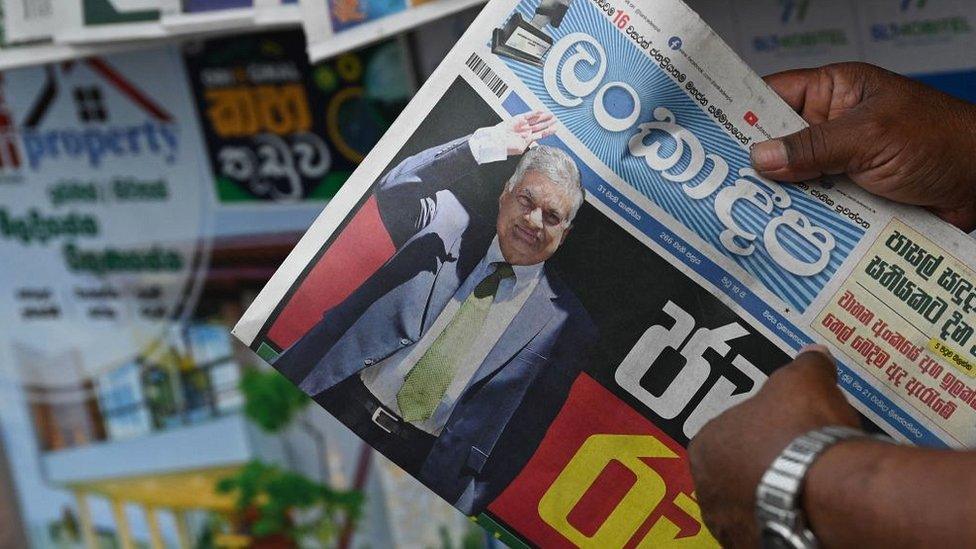Sri Lanka media guide
- Published
This page is no longer being updated. It was last updated on 4 October 2024

Media outlets are divided along ethnic lines
Sri Lanka's media divide along language and ethnic lines.
Separate media outlets cater for Sinhala, Tamil and English speaking audiences. Those in Sinhala have the largest audiences.
Privately-owned TVs have larger audiences than state-owned outlets.
The printed press is popular. There are more than 20 daily titles, publishing in the three main languages.
Privately-owned networks have the lion's share of the TV audience. Non-state media often engage in political debate and criticise government policies.
The state runs two TV stations, radio networks and newspapers in Sinhala, Tamil and English.
At the height of the civil war Sri Lanka was one of the world's most dangerous places for journalists.
Despite the pledges given by President Sirisena in 2015 to investigate past attacks on journalists, nearly all the crimes of violence against journalists remain unpunished, Reporters Without Borders (RSF) said in 2018.
RSF said political control over media ownership is a major concern and has the potential to undermine pluralism and impartiality.
There were some 8.9 million internet users by July 2022, comprising 41% of the population (Internetworldstats.com). The web is a popular and growing medium for news.
There were major restrictions to online connectivity and social media platforms during communal violence in early 2018, said US-based Freedom House.
Press
Daily News, external - state-owned, English-language daily
The Island, external - private, English-language daily
Daily Mirror, external - private, English-language daily
Dinamina, external - state-owned, Sinhala daily
Lankadeepa, external - private, Sinhala daily
Uthayan, external - private, Jaffna-based Tamil daily
Virakesari, external - private, Tamil daily
Television
Sri Lanka Rupavahini Corporation, external (SLRC) - state-owned, operates Rupavahini in Sinhala, Channel Eye in English and Nethra in Tamil
Independent Television Network, external (ITN) - state-run, Sri Lanka's first TV station
TV Derana, external - private
Hiru TV, external - private
Sirasa TV, external - private
TNL, external - private
ART TV, external - private
Swarnavahini, external - private
Shakthi TV, external - private
Radio
Sri Lanka Broadcasting Corporation (SLBC), external - state-owned, operates domestic services in Sinhala, Tamil and English, including widely-listened-to Commercial Service
FM Derana, external - private
Hiru FM, external - private
TNL Radio, external - private
Sun FM, external - private
Yes FM, external - private
Sirasa FM, external - private
Sooriyan FM, external - private
Shakthi FM, external - private
News agencies/internet
Lankapuvath, external - state-owned
Roar Media, external - news, multimedia
TamilNet, external - US-based Tamil news site, widely described as pro-Tamil Tiger